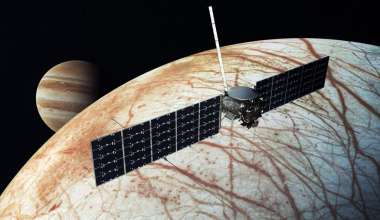People generally take for granted that when they need directions or location information, they can whip out their mobile devices and the Global Positioning System (GPS) will simply just work. But GPS is actually a complex system that relies upon a large number of satellites circling the globe in precise orbits, working together to provide position, navigation, and timing data to users anywhere on Earth. Such a system of satellites is called a constellation, and experts at Aerospace strive to ensure that satellite constellations like GPS continue to remain operational and provide optimal performance for their users.
Statisticians and mathematicians in Aerospace’s Reliability and Statistics Department develop and maintain mathematical models to predict satellite lifetimes, estimate the probability of a successful launch to orbit, and perform probabilistic risk assessments. They developed an innovative technique called Constellation Risk Assessment (CRA) to bring together these models with tools developed by Aerospace performance analysis experts to provide projections of how long and how well a constellation’s capabilities will work, decades into the future.
The below animation illustrates why there is no loss in GPS satellite service even when an old satellite stops working. Due to constellation risk assessment, scientists know when to send up a new satellite to take the place of the old one.
Constellation Risk Animation
Constellation Risk Assessment Predicts How Systems of Satellites Perform
As the operator of a federally funded research and development center, Aerospace also performs independent risk and reliability assessments for space products and systems procured by the federal government. Aerospace is uniquely positioned to bring together the data needed to evaluate the interactions of constellations that have worked for decades with hardware purchased from a wide range of commercial contractors.
CRA also helps agencies that deploy satellite constellations, such as the U.S. Air Force and NASA, determine when they need to develop, procure, and launch new satellites to ensure their constellations remain operational. It measures the potential impact on satellite operations when issues arise that threaten reliability or performance. For example, when a parts issue threatened the readiness of a soon-to-launch satellite, CRA demonstrated that when examined from a constellation-level perspective, the projected impact on the satellite performance was tolerable, allowing the mission to continue and avoid a multi-million dollar fix and years of delay.
Space is a complicated and expensive business, so it is important when launching a satellite to get it right the first time – since once satellite parts fail on orbit, they can't be replaced. At every step in the process, engineers, scientists, and program managers at Aerospace identify, study, and develop plans to manage a multitude of risks to ensure constellation success.
GAP Software Predicts When New Satellites Are Needed
Constellation risk assessment builds upon a 50-year legacy of Aerospace leading the way in ensuring satellite constellation success. In 1968, a group of engineers at Aerospace first conceived of a tool that would use satellite reliability assessments to predict when new satellites were needed to maintain a healthy constellation. By 1981, this concept had been developed into a software tool called the Generalized Availability Program (GAP). GAP has become the industry standard tool to plan for the replenishment of satellite constellations, and is exclusively used by Air Force Space Command (AFSPC) for replenishment analysis of constellations under its purview.
GAPP: The Next Gen
Aerospace experts are now hard at work developing the next generation of software that will carry on the GAP legacy on a modernized platform and support the advanced analysis techniques needed for CRA. Called Generalized Availability and Performance Program (GAPP), this updated software is part of Aerospace’s ongoing effort to provide its customers with the most accurate and complete information possible for making constellation management decisions that will shape the future of the space enterprise.
“Constellation Risk Assessment is a capability unique to Aerospace,” says Michael Moore, associate director of the Reliability and Statistics Department, a part of Aerospace’s engineering and technology group. Moore further explains, “It draws upon expertise in a diverse array of fields including electronic parts, power systems, launch vehicle and satellite reliability, and performance analysis — custom-tailored to each satellite constellation we support. This technology is made possible by the unmatched depth and breadth of space systems expertise that we have here at Aerospace.”









